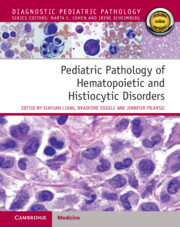Book contents
- Pediatric Pathology of Hematopoietic and Histiocytic Disorders
- Pediatric Pathology of Hematopoietic and Histiocytic Disorders
- Copyright page
- Epigraph
- Contents
- Contributors
- Section I General Hematology and Hematopathology
- Chapter 1 Development of Hematopoiesis in the Fetus, at Birth, and after Birth
- Chapter 2 Normal Anatomy and Function of Lymph Nodes
- Section II Non-Neoplastic Hematologic Disorders of Blood and Bone Marrow
- Section III Non-Neoplastic Disorders of Extramedullary Lymphoid Tissues
- Section IV Neoplastic Disorders of Bone Marrow
- Section V Mature Lymphoid Neoplasms
- Section VI Histiocytic Disorders and Neoplasms
- Index
- References
Chapter 2 - Normal Anatomy and Function of Lymph Nodes
from Section I - General Hematology and Hematopathology
Published online by Cambridge University Press: 25 January 2024
- Pediatric Pathology of Hematopoietic and Histiocytic Disorders
- Pediatric Pathology of Hematopoietic and Histiocytic Disorders
- Copyright page
- Epigraph
- Contents
- Contributors
- Section I General Hematology and Hematopathology
- Chapter 1 Development of Hematopoiesis in the Fetus, at Birth, and after Birth
- Chapter 2 Normal Anatomy and Function of Lymph Nodes
- Section II Non-Neoplastic Hematologic Disorders of Blood and Bone Marrow
- Section III Non-Neoplastic Disorders of Extramedullary Lymphoid Tissues
- Section IV Neoplastic Disorders of Bone Marrow
- Section V Mature Lymphoid Neoplasms
- Section VI Histiocytic Disorders and Neoplasms
- Index
- References
Summary
The immune system, a host defense system, recognizes foreign antigens and defends against invading microorganisms. It consists of primary (central) and secondary (peripheral) lymphoid organs. Primary lymphoid organs include the bone marrow and thymus, which contain lymphoid precursors and support initial antigen-independent differentiation from the immature stage to the mature stage. Secondary lymphoid organs comprise the lymph nodes, spleen, and sites of mucosa-associated lymphoid tissue, including the tonsils, appendix, and Peyer patches of the gastrointestinal tract, where antigen-dependent proliferation and differentiation of B- and T-lymphocytes take place [1].
- Type
- Chapter
- Information
- Publisher: Cambridge University PressPrint publication year: 2024

